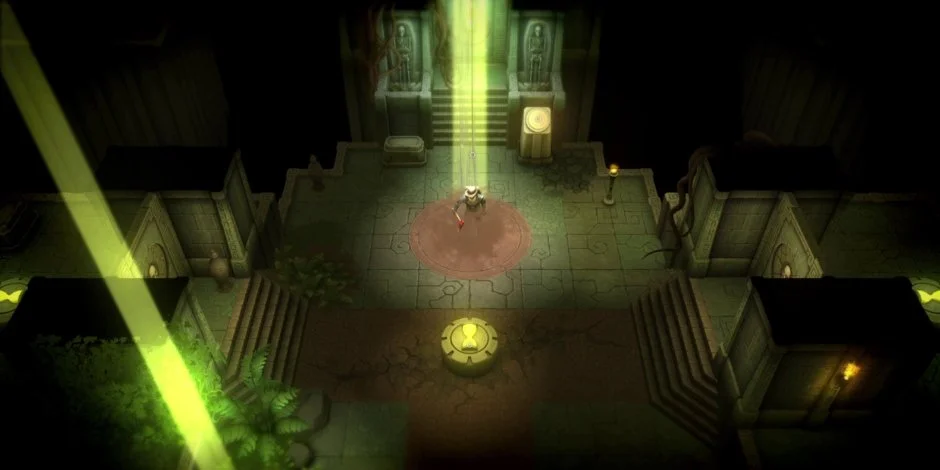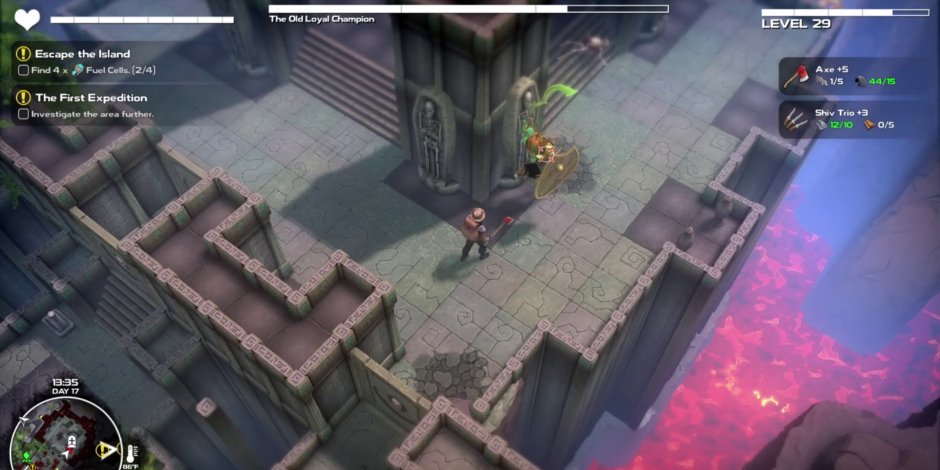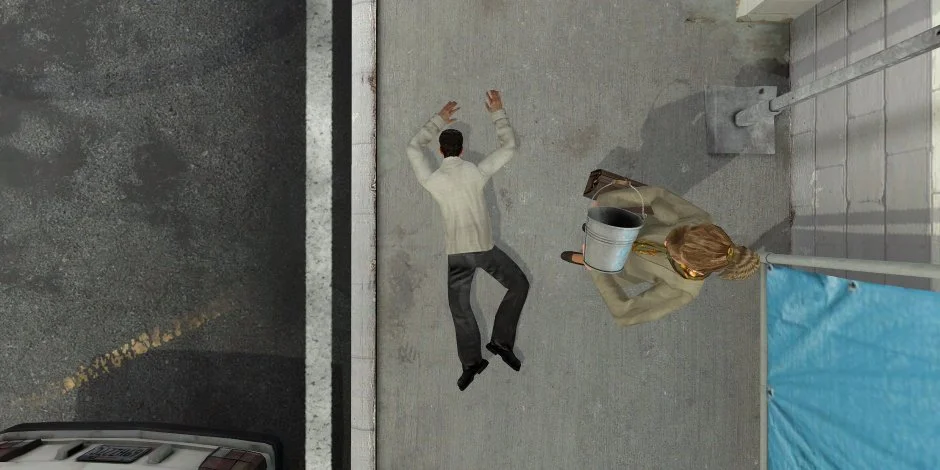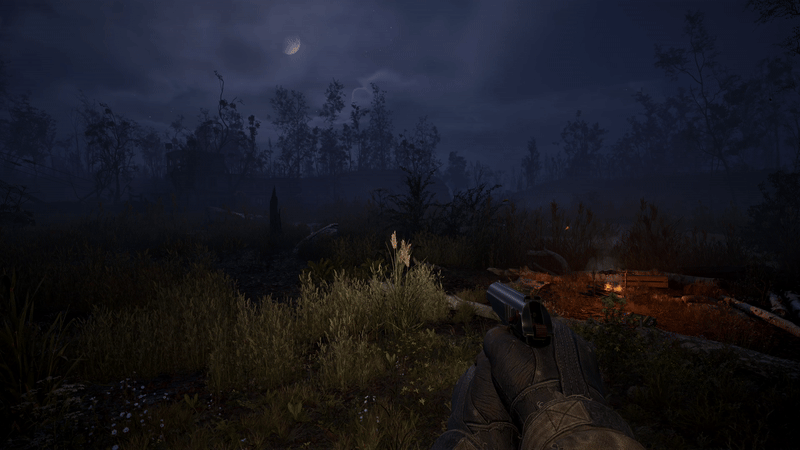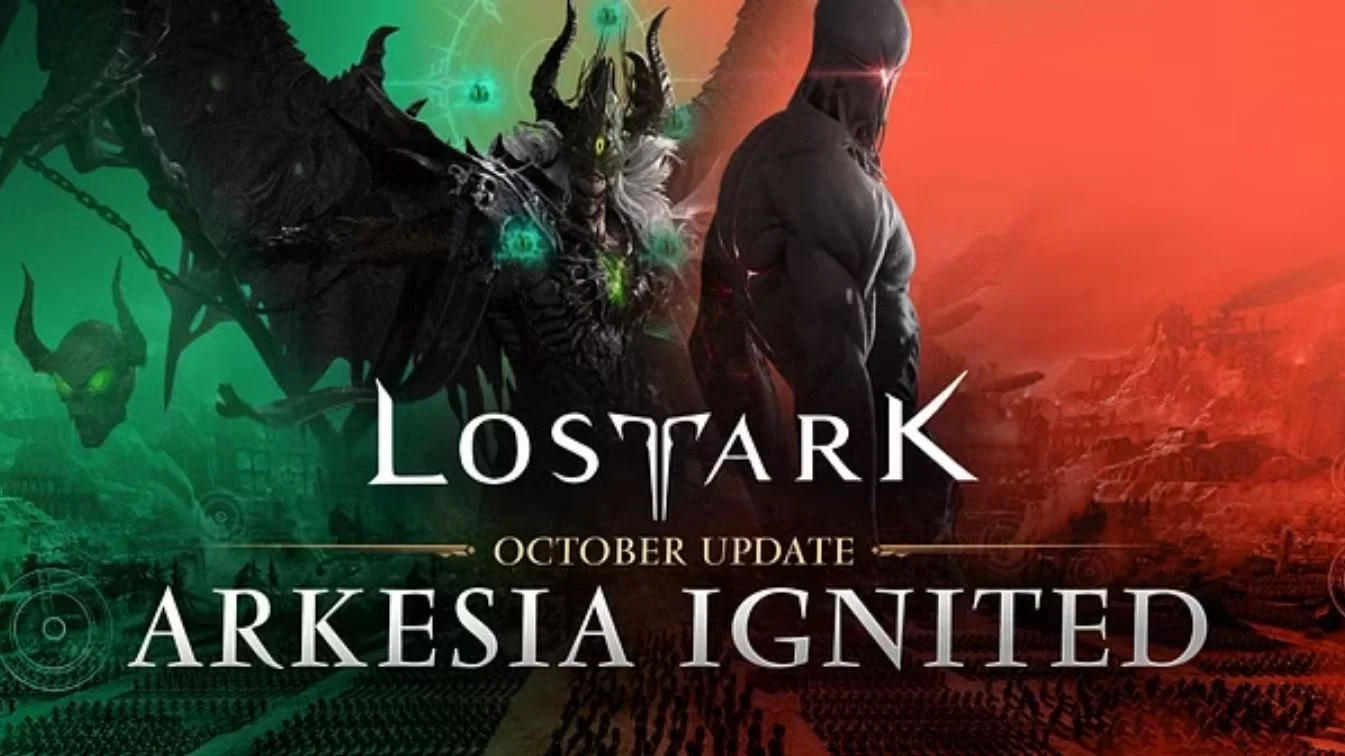Reviewed on PlayStation 5
What defines a survival game? Some might say it’s the ever-present reminder of your own mortality, the constant need to eat, drink, and sleep in order to keep your health and sanity intact. Others might argue it’s a pervasive sense of dread, with danger lurking around every corner and limited resources with which to stay alive. But is it possible to be a survival game without either of these characteristics?
This month I picked up Dysmantle, a survival game that eschews these common notions of survival and asks players to instead focus on enjoying the journey. Developed by Finnish studio 10tons, Dysmantle is an absolute delight, filled with the perfect combination of mystery, adventure, and a dash of horror.
Story
Dysmantle’s story isn’t really the focus of the game, but 10tons has included a fascinating tale nonetheless. The game opens on the main character, a gruff, middle-aged man, emerging from his bunker to find the island he once called home has been overrun with strange mutants. As far as he can tell, no other humans managed to survive.
The central goal is to find a way off the island, which inevitably takes players to every corner of the island in search of rare resources that can be used to power up an escape pod. But while this might be how to technically beat the game, it doesn’t offer much narratively to drive the game forward.
Instead, Dysmantle is more concerned with challenging players to unravel the island’s various mysteries. Relics around the island reveal the origins of the island and the settlers who first lived there, while radio broadcasts hint at the cause of the cataclysm that sent the main character into his bunker in the first place.
Both plotlines weave together in an alluring way that makes each discovery feel genuine and exciting. Every radio broadcast features the same robotic voice reciting a different, vaguely threatening message of loyalty and solidarity, while the relics relay the story of the God-king who ruled over the early inhabitants of the island with his mastery of sorcery.
Dysmantle employs this subtle storytelling beautifully, doling it out in bits and pieces throughout the journey. Picking them up never felt necessary, but finding each new puzzle piece added a bit more color to the world around me. The gradual plot delivery was a highlight of my experience, and I’m eager to go back and find all the collectibles I missed.
Gameplay
Dysmantle borrows some of the best elements from just about every genre, melding them into something that feels unique and familiar at the same time. At its core, though, it’s a game about crafting. Well, specifically about destroying everything around you, then crafting.
Everything in this game can be deconstructed: mailboxes, telephone poles, even the buildings themselves. But many of these items can be torn down just yet, and in this way, the opening hours of the game feel a little narrow. But Dysmantle is, by design, not a game to be rushed.
As I leveled up and acquired new, more powerful weapons, the game opened up in a big way. Now I could cook dishes that gave me permanent benefits, destroy more durable pieces of the environment, and smash through the island’s monsters with ease.
There was something about the loop of spending resources to find more resources that never grew old It always felt like I was making some small amount of progress: like the game was rewarding me for everything I did, no matter how small. Every upgrade helped me push a little further into the island where even more dangerous enemies were waiting.
Dysmantle has a horrifying collection of mutated humans that were determined to bring my quest to a premature end. These aren’t the slow-moving shufflers of zombie movie fare, though; these guys will chase you down with zeal. Not only that but there’s an impressive group of variants that all add their own combat mechanics to the fray.
Fortunately, there’s a wonderful collection of weapons and tools to take enemies out with a variety of strategies. The tried and true melee options are always available, but there are also throwable weapons that are useful for taking enemies out at a distance. There are other, more creative combat options as well, but discovering them is part of the fun.
Dysmantle is remarkable in how attentive it is to some of the smaller details of its design, a trait no doubt born from its initial release in early access on PC. These are just small touches like letting players respawn all enemies in a region at a higher difficulty or retrieving items that have already been placed in the storage box, but they go a long way to making the game feel more fully realized.
The only issue I had with the game was its limited fast travel mechanics and checkpointing system. Restricting fast travel to very specific, often poorly placed points on the map never felt good, and the poor checkpointing at campfires often left me backtracking across half the map just to get back to where I’d left off.
With so many different systems to explore and engage with, playing Dysmantle never really felt stale. Whether I was trying to find the last few ingredients for a dish or exploring an overgrown settlement for new resources, I found even the most mundane tasks to be enjoyable and engrossing.
Audio and Visual
Dysmantle uses a robust array of grotesque noises to fill every environment with a fittingly post-apocalyptic soundscape. Each enemy type approaches the player with a unique battle cry, whether that’s the hiss of the standard mutant or the high-pitched scream of a more aggressive variant. The sound of wind through trees or over desert dunes accompanies the crackling of a nearby campfire or the bubbling of water over rocks.
The environmental art design works in tandem with the audio design to lure players into something resembling a false sense of security. There’s a sense of peace to everything, often in spite of the environment’s dilapidated appearance. It doesn’t hurt that there’s a staggering amount of biodiversity in the game, with snow-capped hills, a blistering desert, and dense forests all existing on the same island.
What Could Be Better
The biggest improvement 10tons could include in the game is the ability to more easily travel across its landscape. While I would love to see more efficient fast travel mechanics, I think even something like a vehicle to more quickly move through the world would go a long way to reducing the tedium of moving back through fully explored areas.
Another additional feature I’d like to see is a customizable weapon/tool wheel. The game currently only has four slots for major tools or weapons, and you can only switch between them in a set order. It makes swapping to a specific tool harder than it needs to be and feels unnecessarily limiting to the overall experience.
Verdict
Dysmantle was an unexpected delight and one I intend on seeing through to the end. There’s an incredible amount of content here, and it miraculously never manages to feel stale. I can easily see myself sinking dozens of hours into this game, and there’s still plenty left to explore. From its captivating mysteries to its satisfying destruction system, Dysmantle is an easy recommendation to fans of almost any genre.
